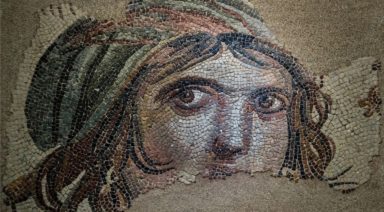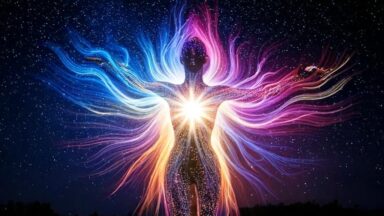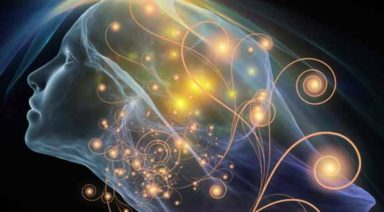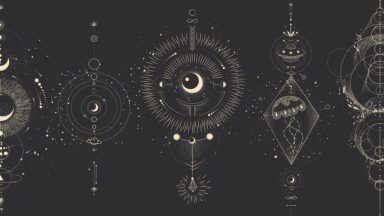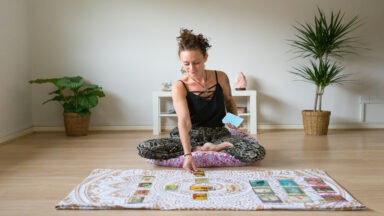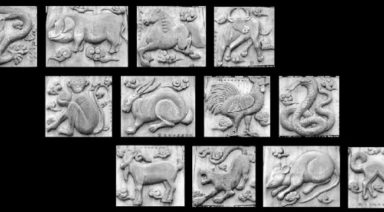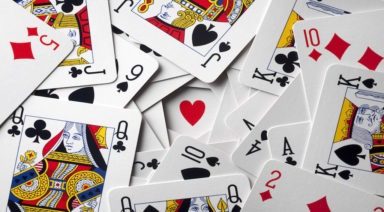Sekhmet, the Egyptian Goddess of War and Female Empowerment

Few historical places on earth perpetually spur such a strong sense of mystery and interest as ancient Egypt. Though millennia have passed since the days of the pharaohs, mythological figures whose presence adorn myriad walls, monoliths, and scriptures, continue to inspire those who find meaning in what they represent. Among them is the powerful lioness goddess Sekhmet, perhaps the ultimate mythological representation of female power.
Sekhmet, also spelled Sachmet, Sekhet, Sakhet or Sakhmet, was one of the oldest gods and goddesses in the ancient Egyptian pantheon who went by many names and titles, appearing often in her characteristic red dress. She is often associated with the goddesses Hathor and Bastet and is depicted with the Uraeus, associating her with the Wadjet.
Above her upright head, as if postured for battle, is the celestial solar disk, and in her hand, grounded steadfast in the earth is the ankh, the Egyptian symbol of life. When standing or striding, she often holds the papyrus specter symbolizing Lower Egypt.
Scholars note that her scepter is one of the most significant representations of the goddess. And, because Sekhmet has the head of a lioness, some have surmised that her likeness may have been inherited from Sudan, Egypt’s neighbor to the south, where lions roamed in great prides.
The Myth of Sekhmet: Solar Deity, Daughter of the Sun God Ra
According to Sekhmet’s story in Egyptian mythology, the sun god Ra grew angry at mankind’s lawlessness. He decided to enact a punishment by sending an aspect of his daughter, the Eye of Ra, to earth in the form of a lioness. She became Sekhmet, and her rampage turned the fields red with human blood. But, as myth would have it, Ra was not a cruel deity, and he ordered Sekhmet to stop the destruction. Yet, she would not obey.
Knowing that Sekhmet’s desire was fueled by blood, the sun god decided to show her what she wanted to see. He resorted to pouring 7,000 jugs of beer and pomegranate juice (which stained the beer blood-red) in her path. She gorged on this ersatz blood and became so drunk that she slept for three days. Upon awakening, Sekhmet’s blood lust had waned, and humanity was saved. Regardless, it was Sekhmet’s tenacity and power as one of the fiercest hunters that would never be forgotten.
An Enduring Symbol of Female Empowerment
Sekhmet, whose name may be translated as “she who is powerful,” naturally inspires female empowerment because she bears the immense and ubiquitous heat of the sun, which is the most powerful entity known to humankind.
From her awesome status, she had garnered the name Nesert, meaning flame. Although also associated with healing and medicine, above all Sekhmet was the destroyer of the enemies of the sun god Ra.
Sekhmet, the goddess of the flame and warrior goddess of Upper Egypt, was an elite protector of the pharaohs during the war. Her fierceness and otherworldly powers were the focus of ancient celebrations and sacrifices meant to appease her and avoid her terrible wrath.
While Sekhmet was known as one of the more terrifying Egyptian deities to her enemies, those in her graces would benefit from her power to avert plague and cure disease. On the other hand, as the “Lady of Pestilence,” she could cast plagues against those who angered her. Ironically, this lady of terror was also known as the “lady of life.”

Hieroglyphic carving of Sekhmet
Her name can be found in the famous Egyptian Book of the Dead as both a creative and destructive force — but above all, she remains the protector of Maat (balance or justice), having been referred to as “The One Who Loves Ma’at and Who Detests Evil.”
Female Empowerment
Karen Tate, the author of Goddess Calling, wrote, “I believe Sekhmet teaches courage, strength, and integrity. Those who fear Sekhmet fear their own power. For women she is particularly important because she teaches us to empower ourselves, to know our strength, and to never let another take our power away… She allows us to grow and find the inner drive and determination to see things through. She is that energy deep down inside that can be called up when we must stand up and be counted, to speak out, or to make things happen. She teaches us to say no.”
Of all the female empowerment quotes, one of the most outstanding comes from Syma Kharal, owner of the Flourishing Goddess School. Kharal teaches that Sekhmet “is that part of you that will not tolerate you playing small or dimming your light to let others shine. She is the fire of your unbridled rage, required to release and transform what holds you back. She is the part of you that will take a ferocious stand against every way that you have compromised yourself.”
The Sekhmet Sisterhood was started as a non-profit organization devoted to empowering women. Founder Michelle Shapiro uses Sekhmet as an acronym for sisterhood, empowering knowledge, harnessing mentorship, and evolving together.
Shapiro’s daughter Millie said, “Sisterhood to me means a group of empowered women who help and support one another to achieve their dreams and not only do they help and support each other, they are happy for each other when these dreams are achieved. Having a sisterhood makes you feel empowered and less alone, they bring you up with them and they want everyone to succeed, and be happy.”
Archaeological Finds of Sekhmet, Warrior Goddess
Curators at The State Hermitage Museum, St. Petersburg, Russia, explained that in the second millennium BCE, the capital of ancient Egypt was relocated southward from Memphis to Thebes. At that time, Sekhmet came to be identified with the local goddess Mut. The Theban Triad of Gods included Amun-Ra; his wife Sekhmet-Mut and their son; and the god of the moon, Khonsa, who lived in Thebes’ Karnak Temple.
A statue of this goddess of war was discovered among the ruins by the Russian traveler and writer Abraham Norov (1795-1869), at the Temple of Sekhmet-Mut. It was originally adorned with hundreds of two-meter-high depictions of her.
More than a hundred years later, northwest of the temple and across the fertile Nile, another great site was found, further revealing the majesty of Sekhmet. Since 1998, archaeologists on the west bank of the Nile, near the ancient city of Luxor, have recovered 287 statues of Sekhmet, which stand as testimony to her importance in ancient Egyptian life and religion. The black granite statues were discovered at the funerary temple of Amenhotep III, the ninth Pharaoh from the ancient nation’s 18th Dynasty.
Modern-Day Sekhmet Temple Honors the Goddess
Thousands of years after her reign, Sekhmet has traveled across the deserts of time, from ancient Egypt to the desert of Cactus Springs, Nevada. Here, feminist and teacher Genevieve Vaughn erected the modern-day Sekhmet Temple in 1993.
The temple is small and open to the elements, with four large arches open onto the four directions. Inside, said Vaughn, there is a sense of spaciousness and protection. “Gifts of fresh flowers, feathers, crystals, incense, poems and pictures of loved ones from the visitors, pilgrims, and activists are placed at the feet of the goddesses.”
Vaughn said she feels blessed to offer the temple as a gift to Sekhmet. “One story about her is that she was outraged at the evil of men and wanted to destroy them but was tricked into submission by drinking a gift of beer which had been colored to look like blood. This is a particularly appropriate warning for us now because we allow ourselves to be drugged into giving up the political and economic power that we could use to stop the destruction of the Earth.
It is good to have the temple near the [nuclear] Test Site, to take a stand against the nuclear radiation that can damage our genes and destroy our fertility. The spirits of the past are counting on us to heed Sekhmet’s warning to stop sipping the drugs of lies and allowing ourselves to be disempowered by consumerism or substance abuse.”
The Enduring Image of Sekhmet
It is a tribute to Sekhmet’s enduring impression upon humankind that her legacy has been rekindled thousands of years after her dominance in the lives of ancient peoples along the Nile River. From her fierce and powerful countenance, modern women still find inspiration in her, seeing the importance of their roles in life, including culture, the arts, and history — all integral to the past, present, and future of humankind.
Tiamat: Planet, Goddess, Creator

The story is familiar: chaos reigned before order; darkness filled the void before light; waters crested and ebbed to shape the land and mountains; generations of gods and humans battled over power and control. These are shared mythologies that run through continents and civilizations. Out of all the creation narratives, one name rises above the rest — Tiamat, the ancient Babylonian goddess considered the foundational force of the universe.
Ancient Babylonia, part of the Mesopotamian empire, was renowned for its beautiful gardens, astronomy, and astrology, and as a cultural bridge between Africa and Asia. The legend of Tiamat is told through the ancient Babylonian creation myth, Enuma Elish, thought to have been scribed by Hammurabi, the sixth ruler and considered the first king of the Babylonian Empire.
The Enuma Elish: The Seven Tablets of Creation
Enuma Elish is the Babylonian creation story, predating and influencing early Judeo-Christian texts. Comprised of 1000 lines etched on seven clay tablets, the Enuma Elish is the primary source for Mesopotamian cosmology and tells the story of how the order was shaped out of swirling chaos. The shaper is Tiamat, goddess of the deep salt waters, who with her mate Apsu, the god of fresh, clean water, gives birth to the first generation of deities. The opening passage sets forth how raw and unformed the world was prior to Tiamat’s efforts:
When on high the heaven had not been named,
Firm ground below had not been called by name,
Naught but primordial Apsu, their begetter,
(And) Tiamat, she who bore them all, Their waters commingling as a single body;
No reed hut had been matted, no marshland had appeared,
When no gods whatever had been brought into being,
Uncalled by name, their destinies undetermined—
Then it was that the gods were formed within them.
This early generation of deities is violent and power-hungry, ready to overthrow Apsu and assume power, launching Tiamat into her second, more violent stage. Many scholars view Tiamat through two phases — the nourishing, creative force, and the destructive, vengeful goddess.


